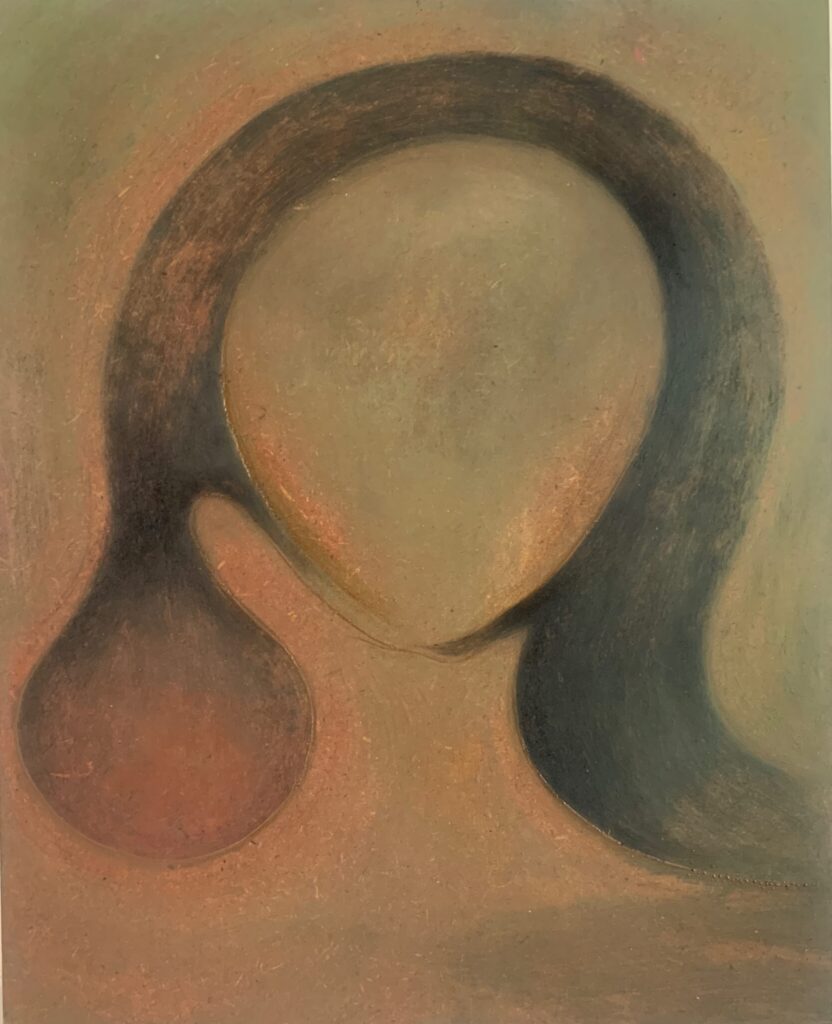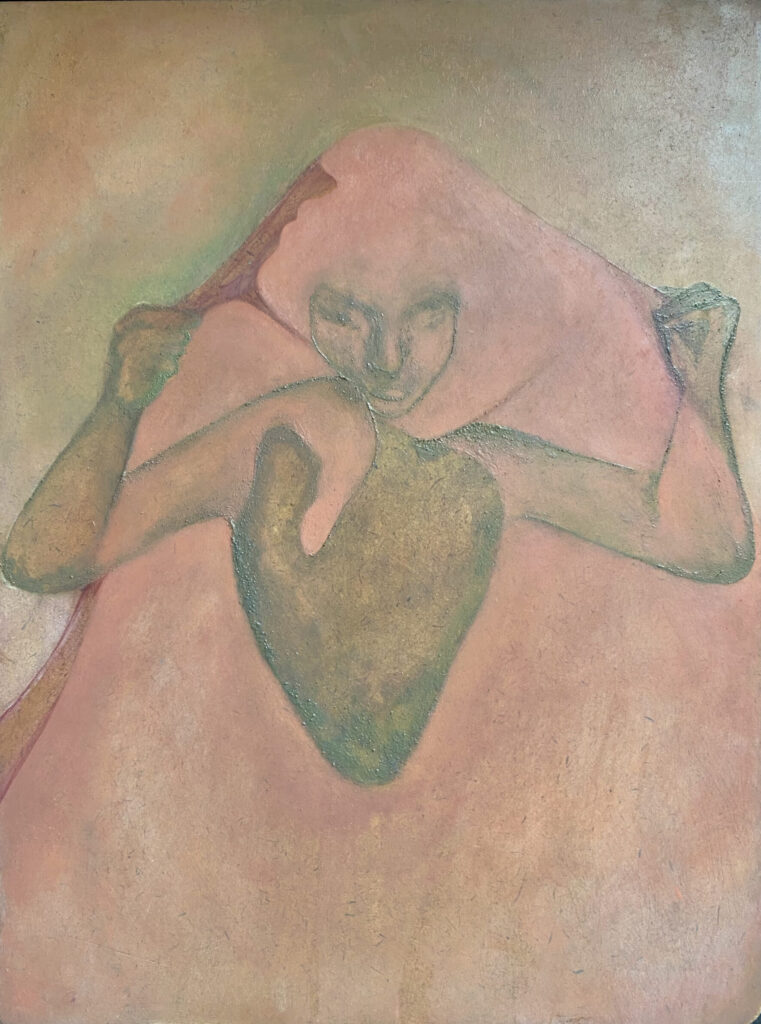FIZA GHAURI is a painter in her third year at the Slade. She is currently studying remotely from Bangkok. JEAN WATT spoke to her about her practice, which explores the essence of beings through subtle, colour-driven, figurative work.
How have you found it making work over the last few months?
It has been really weird; I didn’t make work for a while or made work very slowly. A lot of my work accumulates over months at a time anyways. But this has been even more stretched out. A lot more thinking has been involved with making recently. Making work at MATDOT gallery [Fiza’s studio in Bangkok] has been so stimulating.
In your artist bio, you speak about the idea of capturing the essence of an entity in your paintings. Do you see that as something quite personal or something more general, as in, expressing a shared experience of being?
Capturing can come from a personal place because everything is so fleeting, it commemorates that moment. But the exciting thing about making is the process of generalising and making it digestible for the eye to see. So, it feels personal and general at the same time. It’s encompassing a vision on the surface that generalises it anyway, as a shared experience. Like making bridges the boundary between something being personal or shared.

Do you work from life, or draw, or photograph? What’s your work process?
I work from photographs I take, memories or imagination. They act as a base; then pushing and pulling elements, depending on how significant they are to me. It’s kind of like how memory works: remembering that certain colour or curve. In the works, I try to amplify those things. Colour is something that inspires me.
That’s really interesting to think about your work in terms of memory, or even dreams… that in dreams you never see anyone’s face, just shadowy figures…
Yeah, it’s about the way memory operates. There’s so much we don’t remember. But the things we remember can be so vague and distinctive at the same time. I read that the act of capturing a photo retains that memory more. Even something as simple as taking a picture can cement that moment.
I even find that with photos from my childhood, I can’t tell if I have an actual childhood memory or I’m remembering a photo I’ve seen…
Yeah, it’s like these are all little clues that you intertwine to create the narrative in your own head. Like our minds are performing a past on the basis of these clues.

Do you find that your work is mostly figurative?
I’ve been painting figurative subjects for a while. I want to capture entity and energy, something that is not entirely dimensional. So the body is interesting to explore. We live in our own bodies and capturing another is like internalising a bodily experience and bringing it out. Someone told me that all paintings are kind of like self-portraits.
Interesting, maybe the form of the figure grounds the work. All the other ideas are swirling around it: entity, memory. The figure acts as a central core to all of it, and makes the paintings really powerful.
Yeah, a figure encapsulates all of that. Or it acts as a void that you fill.
You mostly work from photos. Do you take inspiration from film, books, or music?
Inspiration kind of exists everywhere, it’s just about exercising the things that you want to see and what you want to attract. I’ve recently discovered this filmmaker, Amit Dutta. He makes these amazing, compositionally striking films mostly about how painting can be a meditative process. It’s interesting seeing that in a film format because it shows how surroundings and even sound can form a basis for inspiration and making. His film called Nainsukh [2010] is about the Indian miniature painter from the 18th century. It shows setting as an agency for painting.
Do you find you have artists you often return to? Or anyone that has inspired you recently?
I’ve been looking at Odilon Redon for a while now. I come back to his work and the palette is always mesmerising. Colour is a lot of the basis for my work, it influences the shape and form. Redon’s book To Myself [1986] expresses an explorative and curious approach to painting.

I’m really glad that you’re saying how important colour is for you because I feel like I got that from the paintings, but I didn’t know how to articulate it, and it’s interesting to hear you say that you often start with colour as a base…
It’s hard for me to come up with a subject and symbol matter. Colour feels a lot more natural. I can play around with colour.
Can you talk about your most recent painting?
The most recent is Fringed Fruition. I’m still trying to make sense of it. But it’s essentially about actualising something that you imagine. I’m not sure if you can see it, but in the background, there’s the side profile of a figure. This figure imagines but those thoughts are bounded by the physical form. Sometimes they can manifest into reality so the figure in the foreground represents that escaping, to reveal itself through the bounds of our bodies and minds.
You can find Fiza’s work on Instagram @fizaghauri





